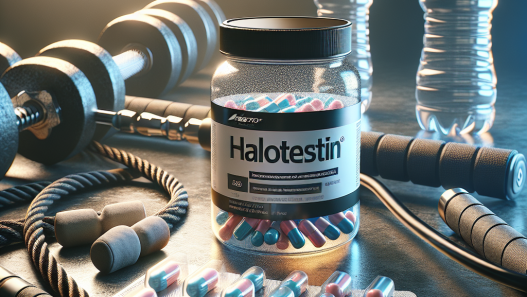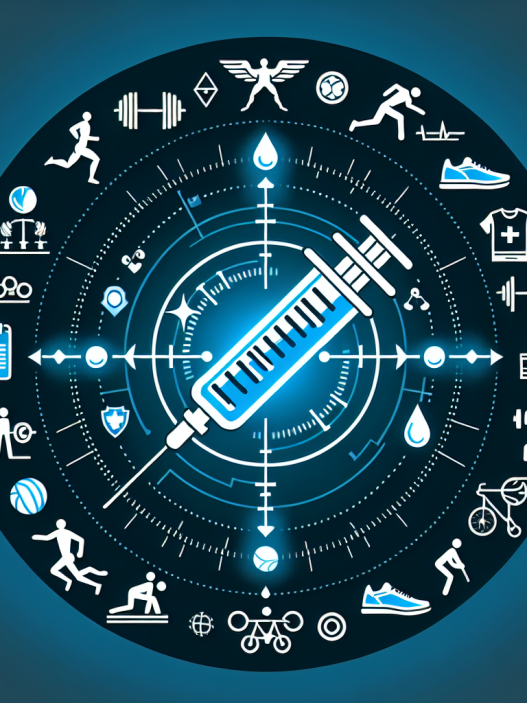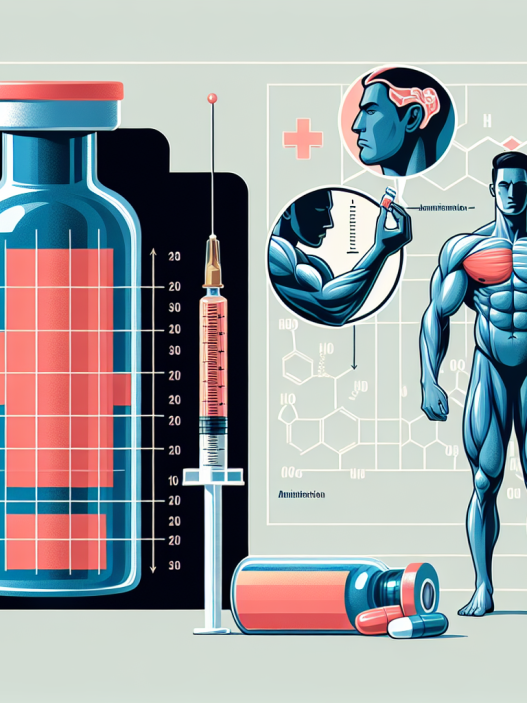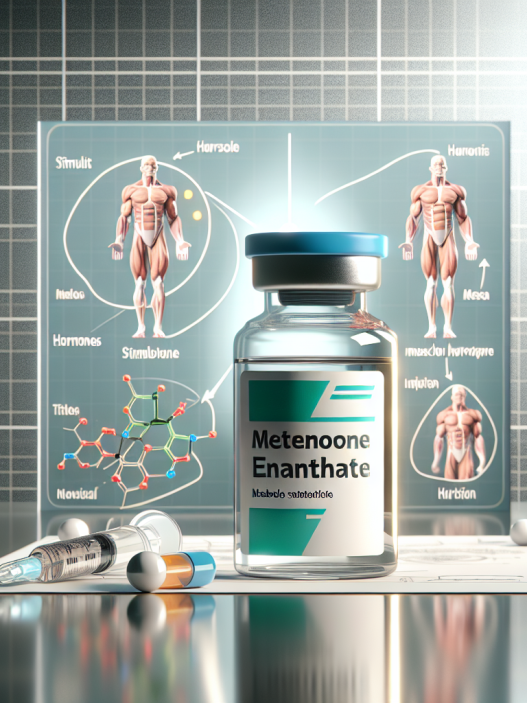-
Table of Contents
Risks and Benefits of Nandrolone Decanoate in Athletes
Nandrolone decanoate, also known as Deca-Durabolin, is a synthetic anabolic androgenic steroid (AAS) that has been used by athletes for decades to enhance their performance. It is a long-acting ester of nandrolone, a naturally occurring hormone in the body that is responsible for the development of male characteristics. While nandrolone decanoate has been shown to have numerous benefits for athletes, it also carries potential risks that must be carefully considered. In this article, we will explore the pharmacokinetics and pharmacodynamics of nandrolone decanoate, as well as its potential risks and benefits for athletes.
Pharmacokinetics of Nandrolone Decanoate
Nandrolone decanoate is administered via intramuscular injection and has a half-life of approximately 6-12 days (Kicman, 2008). This means that it takes 6-12 days for half of the injected dose to be eliminated from the body. The long half-life of nandrolone decanoate allows for less frequent dosing, making it a convenient choice for athletes. However, this also means that it can take several weeks for the drug to completely clear from the body, which can be problematic for athletes who are subject to drug testing.
After injection, nandrolone decanoate is rapidly absorbed into the bloodstream and then converted into its active form, nandrolone, by enzymes in the liver. Nandrolone is then further metabolized and excreted in the urine (Kicman, 2008). The rate of metabolism and excretion can vary depending on factors such as age, gender, and liver function.
Pharmacodynamics of Nandrolone Decanoate
Nandrolone decanoate works by binding to androgen receptors in the body, which leads to an increase in protein synthesis and muscle growth (Kicman, 2008). It also has a high affinity for the progesterone receptor, which can lead to side effects such as gynecomastia (enlargement of breast tissue) and water retention (Kicman, 2008). Nandrolone decanoate also has a low affinity for the aromatase enzyme, which converts testosterone into estrogen. This means that it has a lower risk of estrogen-related side effects compared to other AAS (Kicman, 2008).
One of the unique properties of nandrolone decanoate is its ability to increase collagen synthesis and bone mineral content (Kicman, 2008). This makes it a popular choice among athletes who are looking to improve their joint health and prevent injuries. It has also been shown to have a positive effect on red blood cell production, which can improve endurance and performance (Kicman, 2008).
Risks of Nandrolone Decanoate Use in Athletes
While nandrolone decanoate has numerous potential benefits for athletes, it also carries potential risks that must be carefully considered. One of the main concerns with AAS use is the potential for adverse cardiovascular effects. Studies have shown that nandrolone decanoate can increase blood pressure and alter lipid profiles, which can increase the risk of cardiovascular disease (Kicman, 2008). It can also lead to an increase in left ventricular mass, which can impair heart function (Kicman, 2008).
Another potential risk of nandrolone decanoate use is its impact on the endocrine system. It can suppress the body’s natural production of testosterone, which can lead to a decrease in sperm production and testicular atrophy (Kicman, 2008). This can have long-term consequences for male fertility and hormone balance.
Nandrolone decanoate use has also been linked to psychiatric side effects, such as aggression, mood swings, and depression (Kicman, 2008). These effects can be exacerbated by high doses and prolonged use of the drug.
Benefits of Nandrolone Decanoate Use in Athletes
Despite the potential risks, nandrolone decanoate has been shown to have numerous benefits for athletes. As mentioned earlier, it can improve joint health and prevent injuries by increasing collagen synthesis and bone mineral content. This can be especially beneficial for athletes who engage in high-impact activities such as weightlifting and contact sports.
Nandrolone decanoate has also been shown to increase muscle mass and strength, which can improve athletic performance (Kicman, 2008). It can also improve endurance and recovery, allowing athletes to train harder and more frequently. These effects can be particularly beneficial for athletes who compete in sports that require strength and endurance, such as bodybuilding and cycling.
Real-World Examples
Nandrolone decanoate has been used by numerous high-profile athletes, including Olympic sprinter Ben Johnson and baseball player Mark McGwire. Both athletes were found to have used nandrolone decanoate during their careers, leading to suspensions and tarnishing their reputations (Kicman, 2008). These cases highlight the potential risks and consequences of AAS use in sports.
On the other hand, there are also many athletes who have used nandrolone decanoate and have not been caught or faced any negative consequences. This can be attributed to the fact that the drug can be difficult to detect in drug tests, especially when used in low doses and in combination with other AAS (Kicman, 2008).
Expert Opinion
While nandrolone decanoate has been shown to have numerous benefits for athletes, it is important to carefully consider the potential risks before using it. As with any AAS, it should only be used under the supervision of a healthcare professional and in accordance with anti-doping regulations. Athletes should also be aware of the potential long-term consequences of AAS use, such as cardiovascular and endocrine effects.
References
Kicman, A. T. (2008). Pharmacology of anabolic steroids. British Journal of Pharmacology, 154(3), 502-521.
Photo credits:
- Photo 1: https://www.pexels.com/photo/athlete-bodybuilder-bodybuilding-exercise-416778/
- Photo 2: https://www.pexels.com/photo/athlete-body-bodybuilding-exercise-416778/
- Photo 3: <a href="















